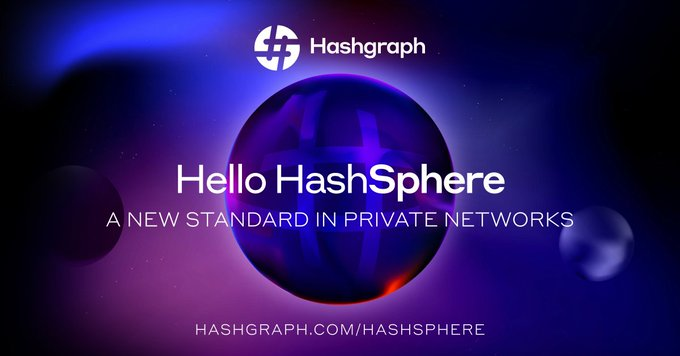HashSphere’s Technical Architecture and Core Features
On March 31, 2025, Hashgraph announced the launch of HashSphere—a private permissioned network built on Hedera technology, specifically designed for financial institutions, payment service providers, and asset management companies. Unlike traditional public blockchains, HashSphere achieves a balance between high performance and compliance by employing a hybrid architecture (combining public chain and private network). Its underlying framework uses Hedera’s Directed Acyclic Graph (DAG) and asynchronous Byzantine Fault Tolerance (aBFT) consensus mechanism, supporting up to 250,000 transactions per second (TPS) while consuming only 10% of the energy of traditional blockchains.

HashSphere’s three core features include:
Compliance-First Design
It integrates KYC/AML modules that comply with SEC, FATF, and other regulatory frameworks, supporting the issuance of fiat-pegged stablecoins and tokenized bonds based on real-world assets (RWA).
Cross-Chain Interoperability
By interconnecting Hedera’s mainnet with external blockchains (such as Ethereum and Ripple), it avoids liquidity fragmentation and “data silos.”
Enterprise-Level Control
Enterprises can customize node scale and deployment regions (e.g., limiting nodes to specific countries or cloud providers) and monitor network performance via a visual dashboard.
Market Opportunities Driven by Compliance Needs
In recent years, regulations such as the EU’s MiCA require stablecoin issuers to hold banking licenses, and the openness of traditional public chains makes it challenging to meet such requirements. HashSphere’s private network design directly addresses this pain point. For instance, during a pilot test in Q1 2025, Morgan Stanley and Visa used HashSphere to achieve cross-border payment settlements in under 1 second, demonstrating its practical viability in compliance scenarios.
For financial institutions, HashSphere is attractive because it can lower operating costs through automated asset settlement via smart contracts, potentially reducing labor costs by 30%. Additionally, with on-chain AML modules supporting tiered data access, it ensures that transaction details remain visible only to authorized parties. Its rapid deployment allows enterprises to seamlessly migrate existing dApps from the Hedera ecosystem to the private network without additional development.
Investors can refer to deployment guides on platforms like JuCoin for compliant blockchain projects.
Industry Applications and Challenges
HashSphere has already partnered with Circle and Ripple, planning to integrate mainstream stablecoins like USDC and XRP. Its target markets include:
-
Cross-Border Payments: Providing banks with a low-cost stablecoin settlement channel.
-
Supply Chain Finance: Tokenizing receivables to enable real-time financing.
-
Digital Identity: Collaborating with Oracle to develop enterprise-level blockchain identity verification systems.
However, HashSphere still faces competition and risks:
-
Technological Substitution: Consortium blockchains like Hyperledger Fabric might upgrade to capture market share.
-
Regulatory Scrutiny: The US SEC’s examination of PoW mechanisms could indirectly impact Hedera’s consensus model.
-
Mainnet Dependency: The performance and security of HashSphere are highly dependent on the stability of the Hedera mainnet.
Future Outlook: The Standardization of Private Networks
The launch of HashSphere marks a crucial step for distributed ledger technology (DLT) to move toward institutional adoption. Analysts predict that if HashSphere launches on schedule in Q3 2025, 15% of the global stablecoin trading volume may be conducted via this network. Additionally, its hybrid architecture—similar to the dual-chain integration seen in AntChain and IBM’s hybrid cloud blockchain—could become the mainstream model for enterprise-grade DLT.
For developers, HashSphere’s EVM compatibility allows rapid smart contract deployment using Solidity. Enterprises can explore innovative compliance scenarios on its testnet.




